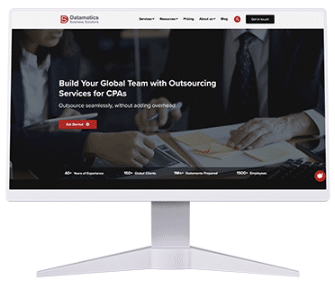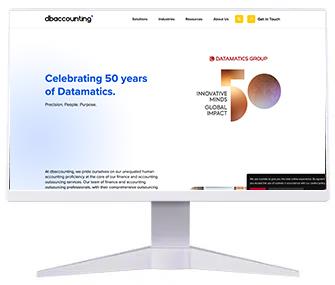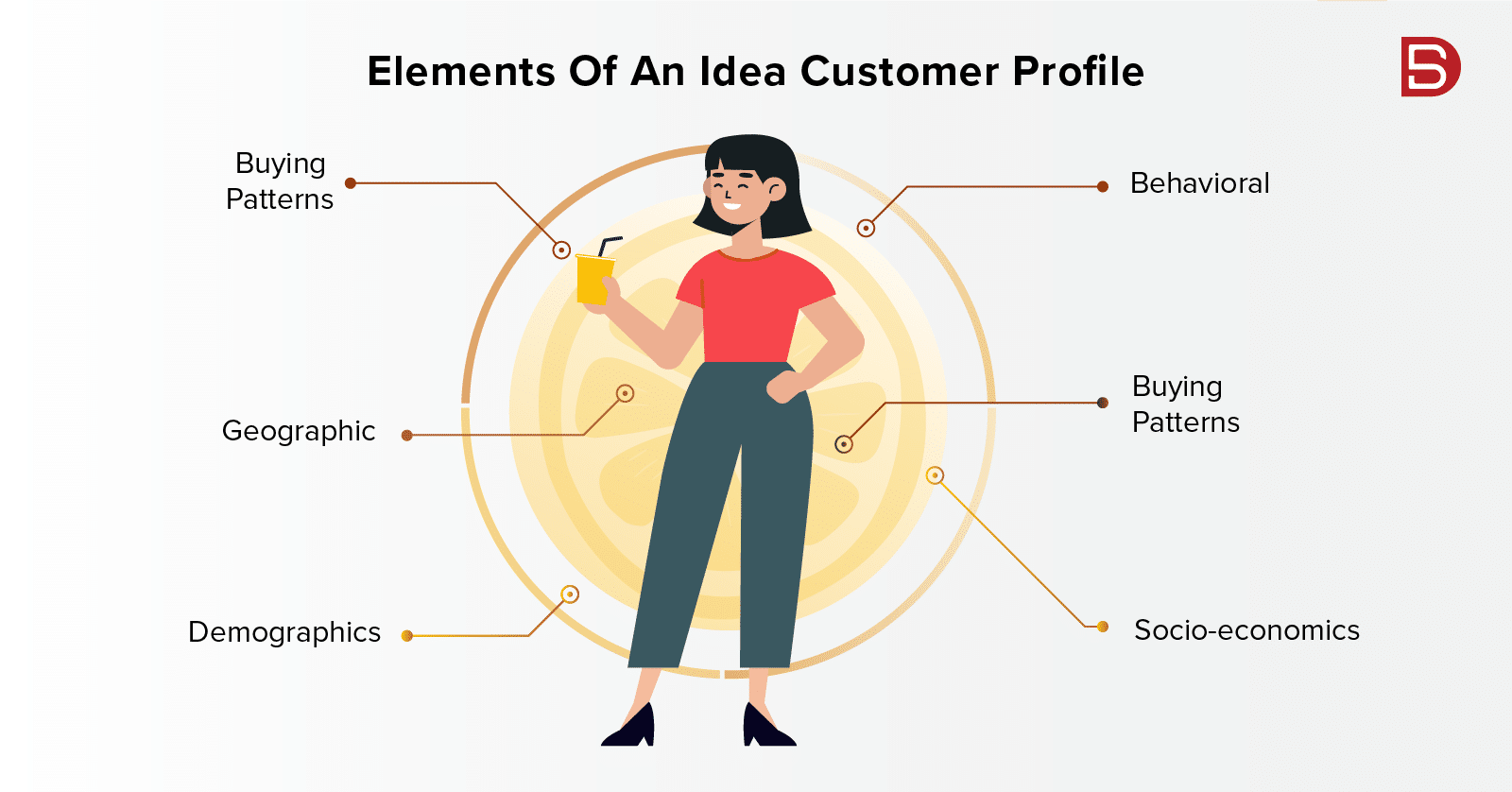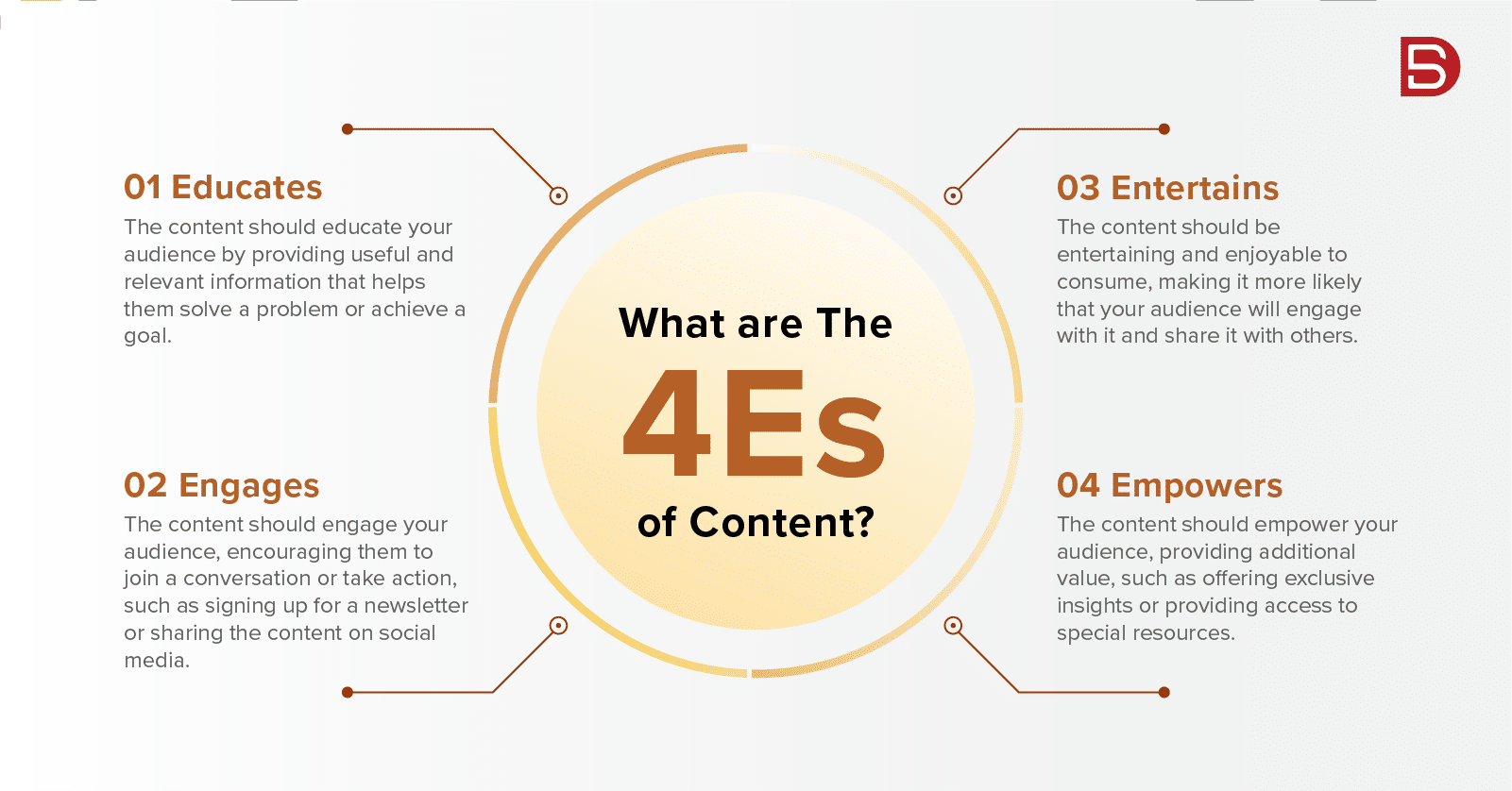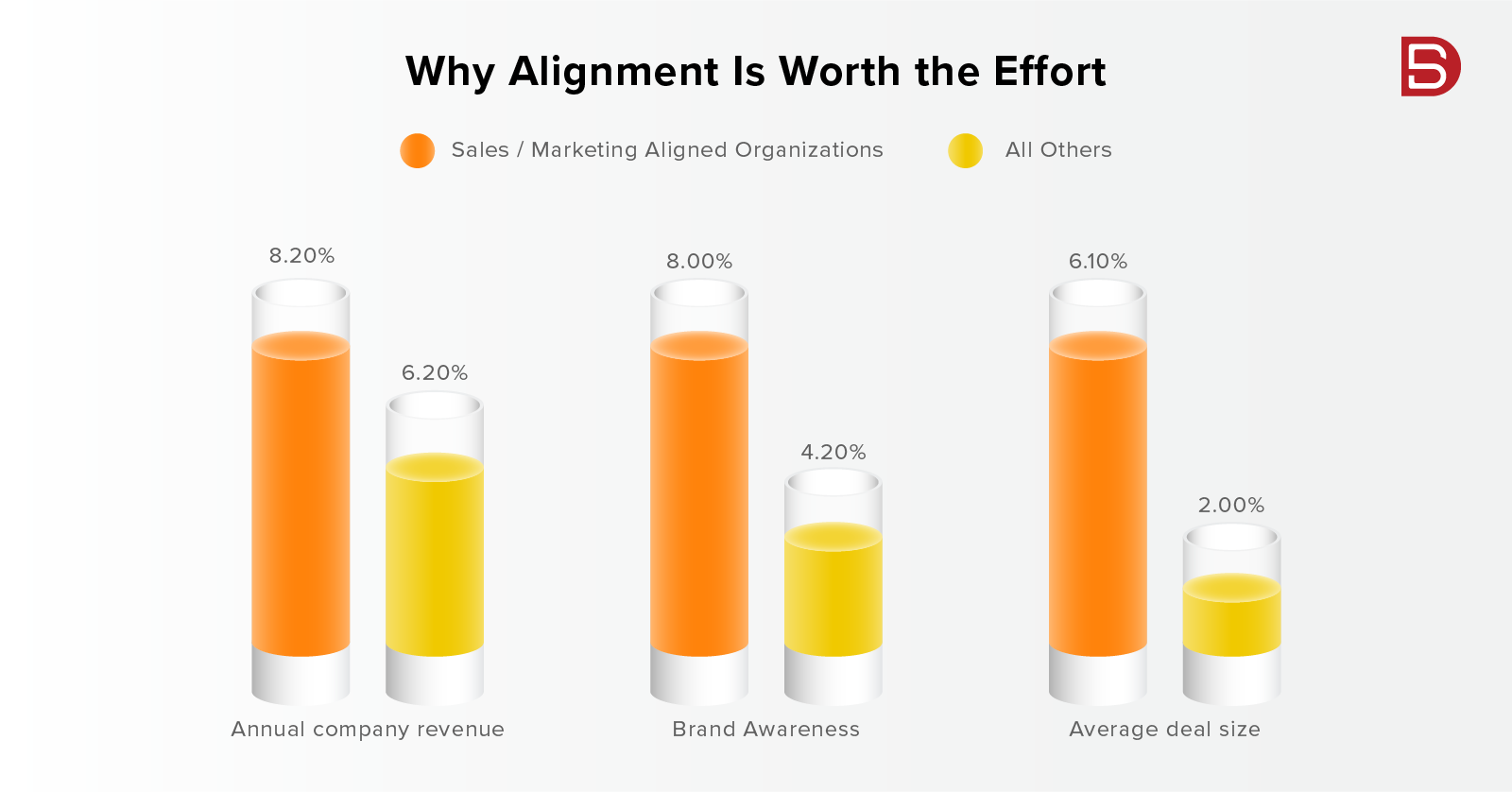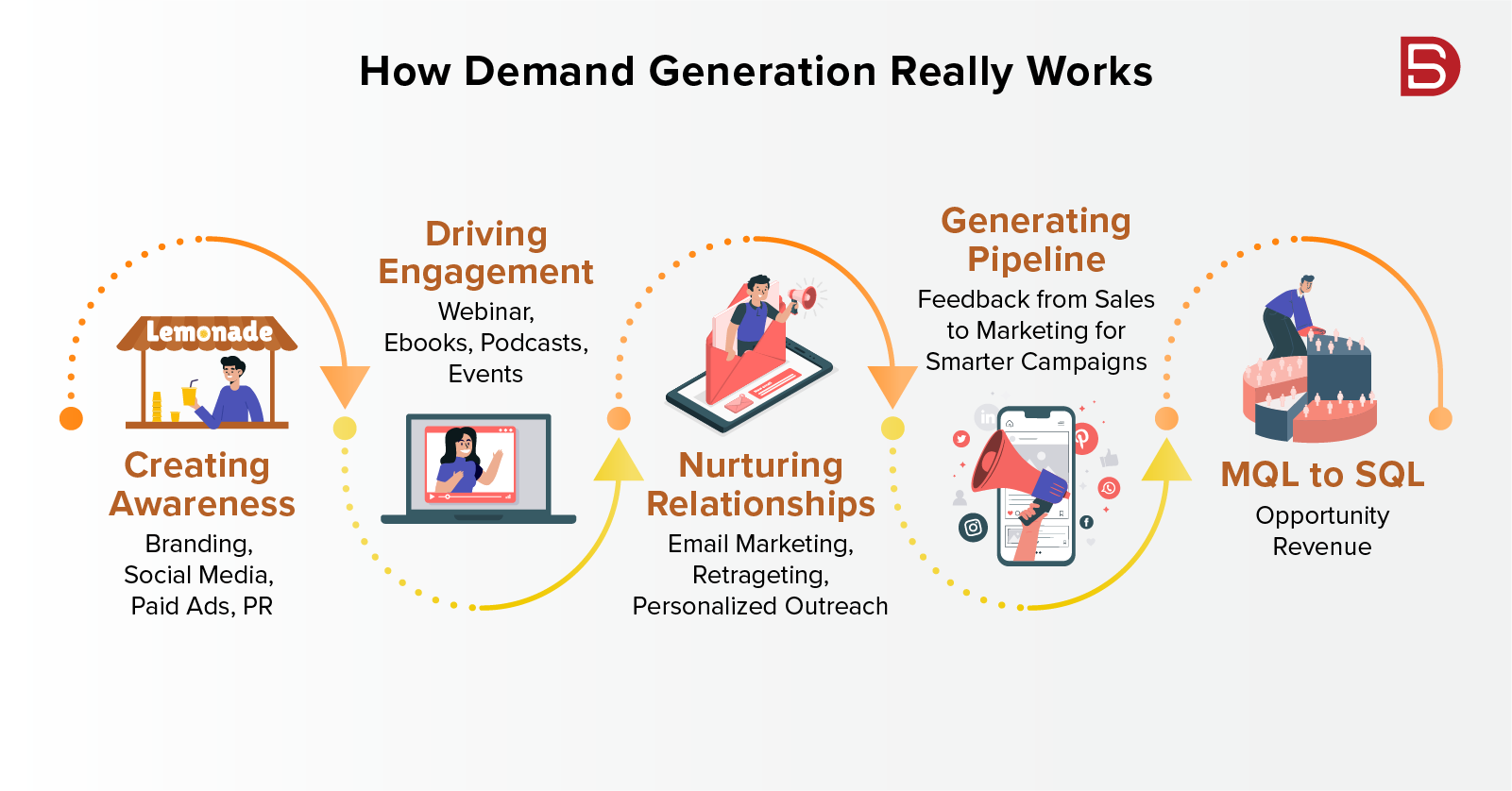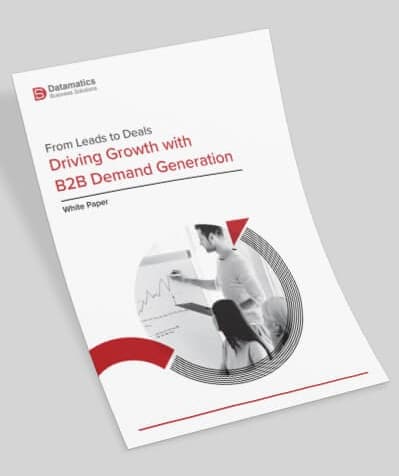Why Demand Generation Is the Backbone of Modern B2B Growth?
In a crowded B2B landscape, lead generation alone just doesn’t cut it anymore. Today’s buyers are more informed, independent, and selective than ever. That’s where demand generation comes in—a holistic, full-funnel strategy that does more than attract leads. It builds awareness, educates prospects, nurtures intent, and fuels long-term pipeline growth.
And the timing has never been more critical. A Forrester study reveals that 72% of B2B buyers prefer to self-educate before ever speaking to sales.
In addition, Gartner reports that the average buying committee now includes 6–10 stakeholders, each of whom consults multiple pieces of content. This complexity calls for a more innovative, more strategic approach to engagement.
Leading companies aren’t just using demand generation services to fill the top of the funnel. They’re building sustainable revenue engines. According to McKinsey, businesses with advanced demand generation programs see 5–10% higher revenue growth than their peers.
This blog will explore how demand generation works, why it’s critical in 2025, and how your business can use it to drive predictable, scalable growth.
Key Takeaway
Demand generation has evolved into the cornerstone of modern B2B growth. Unlike traditional lead generation, it builds awareness, nurtures buyer intent, and drives long-term revenue by aligning with how today’s informed, multi-stakeholder buyers make decisions. Businesses investing in advanced demand generation strategies see measurable, scalable growth.
What Exactly Is Demand Generation? (And What It’s Not)
Imagine you open a lemonade stand.
You don’t just wait for people to walk by and ask for lemonade. Instead, you go to the park and hand out free samples. You also tell a fun story about how your lemonade is made from a secret family recipe. You put up cool signs with bright colors and funny slogans like, “The tastiest lemonade in town!”
Now, the adults and even kids who didn’t plan to buy lemonade are curious. They talk to their parents, and parents talk to other parents. They come to your stand, and some of them ask for more.
That’s demand generation.
You’re not just trying to sell lemonade—you’re making people want it.
To summarize, demand generation is a holistic marketing strategy that aims to create awareness and interest in a company’s products or services. It encompasses various tactics to educate potential customers, build trust, and guide them through the buyer’s journey.
Unlike lead generation, which focuses on capturing contact information from interested prospects, demand generation seeks to establish a brand presence and nurture relationships over time.
Demand generation educates and builds trust, while lead generation turns the audience into customers. Together, they grow revenue.
Key Takeaway
Demand generation is about creating desire, not just collecting leads. It focuses on building awareness, trust, and long-term interest in your brand, paving the way for lead generation to convert that interest into revenue.
Frequently Asked Question
1. What is the fundamental difference between Demand Generation and Lead Generation?
Demand Generation is a top-of-funnel (TOFU) strategy focused on building awareness and educating the market to create interest. Lead Generation is a bottom-of-funnel (BOFU) strategy focused on capturing contact information and converting that existing interest into sales-qualified leads.
2. What are the 5 Key Pillars required to build a robust B2B Demand Generation strategy?
A robust strategy is built on five pillars:
- Ideal Customer Profile (ICP) Development: Defining the perfect target customer.
- Content Strategy: Creating valuable content to educate and engage.
- Channel Strategy: Utilizing a mix of Owned, Earned, and Paid media.
- Sales and Marketing Alignment: Ensuring seamless collaboration for conversions.
- Data & Technology: Leveraging Intent Data and CRM systems for personalized outreach.
3. Why is Sales and Marketing Alignment (Smarketing) so critical for demand generation success?
Alignment is crucial because it ensures a seamless customer journey and higher efficiency. Companies with tightly aligned teams achieve 24% faster revenue growth and 36% higher customer retention rates, as the unified effort nurtures leads more effectively through the funnel.
4. How is the shift toward First-Party Data and Intent Data changing B2B demand generation?
This shift enables marketers to deliver deeper personalization and more relevant content. Intent Data reveals which prospects are actively researching solutions, allowing for timely, targeted outreach that meets the modern B2B buyer’s expectation for value-first interaction.
5. Should B2B marketers still use Gated Content to generate leads?
Gated content is losing its grip. Buyers are weary of forms, preferring ungated content to build trust and find information faster. Marketers are moving toward providing value freely to improve SEO visibility and using retargeting/value-based CTAs to drive deeper action later.
Demystifying Demand Gen vs. Lead Gen
While both demand and lead generation are integral to the sales funnel, they serve different purposes. Demand generation operates at the top of the funnel, aiming to increase brand awareness and interest. Lead generation, on the other hand, functions at the bottom of the funnel, focusing on converting interested individuals into customers.
In the demand generation funnel, people to check out your brand and its products or services. It is a top of the funnel strategy. Meanwhile lead generation helps you convert potentially interested customers to sales at the bottom of the funnel.
Key Takeaway
Demand generation builds awareness and interest at the top of the funnel, while lead generation captures and converts that interest into sales at the bottom. Together, they form a seamless journey, which includes from curiosity to conversion, that drives consistent business growth.
Key Pillars of B2B Demand Generation: Awareness → Engagement → Conversion
- Awareness: This initial stage involves creating visibility for your brand through content marketing, social media, SEO, and other channels. The goal is to reach potential customers and inform them about your offerings.
- Engagement: Once awareness is established, the focus shifts to engaging the audience with valuable content, webinars, and personalized communication. This helps build relationships and trust with potential customers.
- Conversion: The final stage aims to convert engaged prospects into customers through targeted offers, demonstrations, and sales interactions. This stage benefits from the trust and relationship built during the earlier phases.
These three core aspects are essential for connecting with your audience, delivering valuable content, and driving actions that support business growth.
Key Takeaway
B2B demand generation thrives on three core pillars—awareness, engagement, and conversion. First, you attract attention, then build meaningful relationships through value-driven interactions, and finally convert trust into tangible business outcomes that fuel sustained growth.
The Mindset Shift: Building Trust Before Asking for a Meeting
Modern B2B buyers prefer researching and understanding products or services before engaging with sales representatives. This shift necessitates a focus on building trust and providing value upfront. Content Marketing Institute emphasizes that instead of just publishing content, businesses should focus on showing up where new audiences are and building an audience, not just a list.
Companies can create a more effective and sustainable path to revenue growth by prioritizing demand generation strategies that educate and build trust.
The Modern B2B Buyer Has Changed — And So Has Demand Generation
The modern B2B buyer has undergone a significant transformation, reshaping the demand generation landscape. Today’s buyers are more informed, autonomous, and discerning than ever before. They prefer to conduct extensive research independently. In fact, studies show that they often complete up to 70% of their buying journey before engaging with a sales representative.
This shift necessitates a move from traditional, transactional marketing to a more nuanced, relationship-driven approach. Buyers now expect personalized, value-first interactions addressing their needs and challenges.
Multi-touch marketing strategies have become essential, ensuring consistent and relevant engagement across various channels and touchpoints. Businesses can build trust and position themselves as credible partners by delivering valuable content and insights at each stage of the buyer’s journey.
Furthermore, understanding and mapping the buyer’s journey cannot be overstated. By aligning marketing efforts with the buyer’s research and decision-making processes, companies can provide timely and pertinent information that guides prospects toward a purchase decision.
This alignment fosters stronger relationships and increases the likelihood of conversion.
Adapting to the modern B2B buyer involves embracing a comprehensive demand generation strategy that prioritizes relationship-building and delivers consistent value. By doing so, businesses can effectively engage today’s empowered buyers and drive sustainable growth.
Key Takeaway
Today’s B2B buyers are informed, independent, and value-driven, completing most of their journey before ever speaking to sales. To reach them, businesses must adopt a relationship-first demand generation strategy that delivers personalized, consistent value across every touchpoint, building trust and driving sustainable growth.
The Core Building Blocks of a Demand Generation Strategy
Building a robust demand generation strategy is akin to constructing a well-oiled machine—each component plays a vital role in attracting, engaging, and converting potential customers. Let’s delve into the core building blocks that form the foundation of an effective demand generation strategy.
1. Ideal Customer Profile (ICP) Development: Know Exactly Who You're Talking To
Imagine you’re selling a project management tool. Your ICP might be mid-sized tech companies with 100-500 employees located in North America that struggle with cross-departmental collaboration. By focusing your marketing efforts on this specific group, you increase the likelihood of resonating with potential customers who genuinely need your solution.
An Ideal Customer Profile (ICP) describes the perfect customer for your product or service. It encompasses firmographic data such as industry, company size, revenue, geographic location, behavioral traits, and pain points.
According to Cognism, companies that fit your ICP are more likely to buy, stay loyal to your product, and refer you to others. Organizations that utilize a detailed ICP see a 38% increase in sales win rates, contributing to a 208% growth in marketing-generated revenue.
Having an ICP allows businesses to allocate resources more effectively, focusing efforts on high-potential leads and reducing wasted marketing spend.
An accurate ICP helps build stronger partnerships by ensuring that the product or service is tailored to meet the specific needs of the target customer.
2. Content Strategy: Educate, Engage, Empower (Not Just Sell)
Think about this. You are a cybersecurity firm. You need to sell your services. Instead of pushing a sales pitch, create a series of blog posts or videos that address common challenges your ICP faces. Something like a “Top 10 Ways to Protect Your Business from Phishing Attacks,” providing actionable advice without directly promoting their services. Does this not better convince your ICPs than reading from a mundane pitch?
Content is the lifeblood of demand generation. Content is king they said. And it still stands true. A well-crafted content strategy aims to educate your audience, engage them with valuable insights, and empower them to make informed decisions.
Content marketing generates 3x more leads per dollar spent than traditional advertising, and it costs 62% less. 76% of marketers report that their content marketing efforts have helped generate demand and leads in the past 12 months. 58% of B2B marketers have reported an increase in sales and revenue attributed to content marketing.
By investing in high-quality, consistent, and audience-focused content, businesses can achieve significant improvements in lead generation, customer engagement, and overall ROI. The content approach builds trust and positions your brand as a thought leader in your industry.
3. Channel Strategy: Owned, Earned, Paid (And Why You Need All Three)
A multi-channel approach ensures your message reaches your audience wherever they are.
- Owned Media: These are channels you control, such as your website, blog, and email newsletters. They serve as the foundation for your content and messaging.
- Earned Media: This includes publicity gained through word-of-mouth, customer reviews, and media coverage. It’s a testament to your brand’s credibility and value.
- Paid Media: These are promotional efforts like pay-per-click ads, social media advertising, and sponsored content. They help amplify your reach and attract new audiences.
According to Meltwater, integrating all three types of media creates a dynamic marketing ecosystem that can adapt to changing market conditions and consumer behaviors.
For instance, a SaaS company might publish a comprehensive guide on their blog (owned), which gets shared by industry influencers (earned), and then promote it through LinkedIn ads (paid) to maximize visibility.
Multi-channel marketing strategies experience an average of 24% higher conversion rates compared to those using single-channel approaches. Companies with robust multi-channel customer engagement strategies retain an average of 89% of their customers. This is in stark contrast to a 33% retention rate for companies with single-channel strategies.
These numbers underscore the value of a cohesive multi-channel marketing strategy.
Businesses can significantly enhance customer acquisition and retention by effectively combining owned, earned, and paid media.
4. Sales and Marketing Alignment: The Handoff Matters More Than You Think
Remember that lemonade stand. Now, say your friend joins you. You oversee telling everyone about the lemonade stand (marketing) and your friend oversees selling it (sales). Now you go around telling people that you guys have special flavored lemonades. But you have only the regular lemon flavor. People will get confused and walk away.
But if you both talk daily, agree on what flavor to sell, and keep track of who likes what, you’ll make more sales—and people will return.
That’s what sales and marketing alignment is: working together so your customers are happy and your stand is a success.
Alignment between sales and marketing teams is crucial for a seamless customer journey. When both teams collaborate, they can effectively nurture leads through the funnel, ensuring a higher conversion rate.
According to The B2B Playbook, companies with tightly aligned teams see higher customer retention and sales win rates—36% higher customer retention rate compared to those without such alignment. Moreover, organizations that synchronize their sales and marketing efforts achieve 24% faster revenue growth.
Fostering alignment between the sales and marketing teams brings tangible benefits. By working together, businesses can enhance customer satisfaction and drive significant improvements in their bottom line.
5. Data & Technology: Using Intent Data, CRM, Automation Tools
Leveraging data and technology enhances your ability to identify, engage, and convert potential customers.
- Intent Data: This reveals which prospects are actively researching solutions, allowing you to target them with timely and relevant content.
- CRM Systems: Customer Relationship Management tools help track interactions, manage leads, and personalize communication.
- Automation Tools: These streamline repetitive tasks, such as email campaigns and social media posting, freeing up time for strategic initiatives.
Utilizing intent data allows sales teams to identify when specific accounts are showing intent to purchase, enabling more personalized outreach.
Say for instance, a marketing team uses intent data to identify a company researching project management tools. They then use their CRM to tailor an email campaign highlighting how their solution addresses the prospect’s specific needs, increasing the likelihood of conversion.
A successful demand generation strategy is built on a clear understanding of your ideal customer, delivering valuable content, leveraging multiple channels, ensuring sales and marketing alignment, and utilizing data-driven technologies.
By focusing on these core building blocks, businesses can create a sustainable pipeline of qualified leads and drive long-term growth.
Key Takeaway
A powerful demand generation strategy is built on five interconnected pillars — knowing your ideal customer, creating valuable content, leveraging multi-channel marketing, aligning sales and marketing, and using data-driven technology. Together, these elements form a cohesive engine that attracts the right audience, builds trust, and drives consistent, scalable business growth.
You can also read: 6 Essential Elements of a Successful Demand Generation Strategy
How Demand Generation Really Works (Step-by-Step Journey)
Demand generation today has evolved into a strategic, multi-touch process that goes beyond mere lead acquisition. It’s about creating meaningful relationships with potential customers, guiding them through their buying journey, and aligning marketing efforts with sales objectives to drive sustainable growth.
But how does it even work? Let’s delve into the step-by-step journey of effective demand generation.
Step 1: Creating Awareness: Branding, Social Media, Paid Ads, PR
The first step in demand generation is building brand awareness. This involves introducing your brand to potential customers and making them aware of the problems you solve. This includes key tactics like:
- Branding: Developing a strong brand identity that resonates with your target audience.
- Social Media: Engaging with prospects on platforms like LinkedIn, Twitter, and Facebook to share valuable content and insights.
- Paid Advertising: Utilizing pay-per-click (PPC) campaigns, display ads, and social media ads to reach a broader audience.
- Public Relations (PR): Securing media coverage, press releases, and thought leadership articles to establish credibility.
Data Point: According to a study by The Mx Group, 83% of marketers view content marketing as the most effective strategy for demand generation efforts.
Step 2: Driving Engagement: Webinars, Ebooks, Podcasts, Events
Once awareness is established, the next step is to engage your audience by providing valuable content that addresses their pain points and interests. Effective engagement tactics include:
- Webinars: Hosting live or recorded sessions on industry topics to educate and interact with prospects.
- Ebooks and Whitepapers: Offering in-depth resources that provide solutions to common challenges.
- Podcasts: Sharing expert interviews and discussions to position your brand as a thought leader.
- Events: Participating in or hosting industry conferences, workshops, and networking events.
Data Point: Research from studioID indicates that 65% of buyers find webinars and digital events to be the most valuable content formats for decision-making.
Step 3: Nurturing Relationships: Email Marketing, Retargeting, Personalized Outreach
Engagement leads to relationship-building. Through email marketing, retargeting strategies, and personalized outreach, you can nurture leads by providing consistent value and addressing their evolving needs.
- Email Marketing: Sending targeted, personalized emails to keep prospects informed and engaged.
- Retargeting: Using cookies to display relevant ads to users who have previously visited your website or engaged with your content.
- Personalized Outreach: Tailoring communications based on a prospect’s behavior, preferences, and stage in the buyer’s journey.
Data Point: According to Inbox Insight, 47% of marketers identify developing targeted content by buyer stage as a significant challenge in lead nurturing initiatives.
Step 4: Generating Pipeline: MQL → SQL → Opportunity → Revenue
As relationships strengthen, it’s time to guide prospects through the sales funnel. This involves identifying Marketing Qualified Leads (MQLs), transitioning them to Sales Qualified Leads (SQLs), and ultimately converting them into opportunities and revenue.
- Marketing Qualified Leads (MQLs): Leads that have shown interest through interactions like downloading content or attending webinars.
- Sales Qualified Leads (SQLs): Leads that have been vetted and deemed ready for direct sales engagement.
- Opportunities: SQLs that have entered the sales pipeline with a defined need and budget.
- Revenue: Closed deals resulting from successful navigation through the pipeline.
Data Point: The Mx Group reports that aligning sales and marketing teams can lead to a 36% higher customer retention rate and a 38% increase in sales win rates.
Step 5: Closing the Loop: Feedback from Sales to Marketing for Smarter Campaigns
The final step is to close the loop between sales and marketing teams. Regular feedback sessions allow for sharing insights on lead quality, conversion challenges, and customer feedback. This collaboration ensures that marketing strategies are continuously refined to better meet potential customers’ needs.
- Regular Meetings: Facilitating open communication between sales and marketing to discuss lead quality and campaign effectiveness.
- Shared Metrics: Establishing common KPIs to evaluate performance and identify areas for improvement.
- CRM Integration: Utilizing customer relationship management systems to track interactions and outcomes.
Data Point: According to The B2B Playbook, companies with tightly aligned sales and marketing teams see higher customer retention and sales win rates.
Demand generation is a comprehensive, multi-step process that requires strategic planning, cross-functional collaboration, and continuous optimization. By creating awareness, driving engagement, nurturing relationships, generating a qualified pipeline, and closing the loop with feedback, businesses can build lasting relationships with customers and drive sustainable growth.
Investing in demand generation enhances lead quality and conversion rates and aligns marketing efforts with sales objectives, leading to improved customer retention and increased revenue.
Key Takeaway
Effective demand generation is a strategic, multi-step journey, from creating awareness and driving engagement to nurturing relationships, generating qualified pipelines, and closing the loop through sales-marketing alignment. By optimizing each stage, businesses can build trust, boost lead quality, and drive predictable, long-term revenue growth.
Common Pitfalls That Kill Demand Generation Programs
Demand generation is the backbone of modern B2B marketing. When done right, it creates a steady flow of high-intent prospects and long-term pipeline growth. But many companies fall into traps that weaken—even completely derail—their demand gen efforts.
Let’s explore the most common pitfalls that kill demand generation programs and how to steer clear of them.
1. Misalignment Between Sales and Marketing
This is perhaps the most talked-about issue in B2B—and for good reason. When sales and marketing teams operate in silos, the result is a disjointed buyer journey, inconsistent messaging, and wasted leads.
Imagine marketing running a brilliant campaign generating dozens of leads, only to hear from sales that “none of them were qualified.” Or vice versa. The biggest pitfall – sales is chasing leads that marketing knows weren’t ready in the first place.
Fix it: Establish shared goals, create joint SLAs (Service-Level Agreements), and hold regular sync meetings. Use the same CRM and attribution models to keep both teams on the same page. According to LinkedIn’s B2B Benchmark, aligned organizations achieve 67% higher conversion rates and close 38% more deals.
2. Over-Focus on Short-Term Leads
Many teams fall into the trap of chasing only leads that are “ready to buy now.” This approach may generate quick wins, but it overlooks the 95% of your potential buyers who aren’t in-market today.
Focusing only on short-term demand means you’re ignoring brand-building efforts that fuel long-term pipeline.
Fix it: Balance your efforts between short-term lead generation (e.g., BANT-qualified leads) and long-term brand demand. Use educational content, awareness campaigns, and thought leadership to engage early-stage buyers. Remember, consistent brand presence increases future purchase likelihood by 3x.
3. Poor Measurement and KPIs
Another silent killer of demand gen programs is bad metrics. Too often, teams obsess over vanity metrics—clicks, impressions, and MQL volume—without linking them to pipeline or revenue. This creates a false sense of progress while sales teams struggle with poor lead quality.
Fix it: Align marketing KPIs with sales outcomes. Instead of counting form fills, focus on pipeline contribution, lead-to-opportunity conversion rate, and customer acquisition cost (CAC). A recent report by Demand Gen Report found that 61% of marketers now use pipeline metrics as their primary success indicator.
4. Ignoring Trust and Long-Term Brand Building
We live in an age of skepticism. B2B buyers are flooded with cold emails, generic ads, and salesy pitches. If your demand gen strategy doesn’t prioritize trust, you’ll get ignored—no matter how clever your targeting is.
Trust isn’t built overnight. It’s earned through helpful content, consistent messaging, and a human tone. If your marketing feels like a megaphone instead of a conversation, you’re losing more than you know.
Fix it: Invest in authentic storytelling, use customer testimonials, and highlight your brand’s values. Show up consistently—especially when buyers aren’t ready to buy yet. Edelman’s Trust Barometer shows that 81% of people need to trust a brand before making a purchase.
Demand generation is not a “set it and forget it” function. It’s a dynamic, strategic discipline that requires cross-team alignment, long-term thinking, and a relentless focus on delivering value.
Avoid these common pitfalls by taking a more balanced, trust-driven, and outcome-focused approach. The result? Stronger pipelines, higher-quality leads, and marketing that actually drives business impact—not just impressions
The Future of Demand Generation: Trends to Watch
As B2B marketing evolves, so does our approach to demand generation. The future promises a smarter, faster, and more human approach to building demand. Here are four key demand generation trends shaping that future.
Trend 1: AI and Predictive Analytics Are Redefining Targeting
Artificial Intelligence (AI) and predictive analytics are no longer futuristic buzzwords. They’re becoming essential to modern demand gen. These tools are helping marketers go beyond surface-level targeting by analyzing behavioral data, content interactions, and purchase intent to predict which accounts are most likely to convert.
Instead of waiting for someone to download a whitepaper, AI tools can now tell you which companies are researching your solutions—and what content they’re consuming—before they even fill out a form.
Why it matters: Predictive analytics enables sales and marketing teams to focus on the proper accounts at the right time, improving conversion rates and reducing wasted spend. According to Salesforce, 83% of marketers using AI say it’s essential to meeting their goals.
Trend 2: Video and Short-Form Content Are Dominating B2B Attention
Video isn’t just for B2C brands anymore. B2B buyers are consuming more video content than ever—especially short-form formats like LinkedIn videos, reels, and YouTube Shorts. It’s quick, engaging, and mobile-friendly. It is precisely how today’s professionals prefer to learn and interact.
According to Wistia, B2B brands that include video on landing pages increase conversions by up to 80%. Short-form video makes complex topics more digestible and human, whether it’s product explainers, behind-the-scenes stories, or thought leadership clips.
Pro tip: Keep it conversational, value-driven, and under 60 seconds. You’re not selling—you’re sparking interest.
Trend 3: First-Party Data Is the New Gold
With the death of third-party cookies on the horizon, brands are shifting focus to building robust first-party data strategies. This includes collecting behavioral and engagement data directly from your audience—through website visits, email interactions, form fills, and product usage data.
First-party data ensures compliance (especially with privacy regulations like GDPR and CCPA) and delivers richer, more accurate insights. It enables true personalization at scale, something today’s B2B buyers expect.
Why it matters: A report by Twilio Segment found that 69% of consumers are more likely to buy from brands that offer personalized experiences, and first-party data is the engine behind that personalization.
Trend 4: Gated Content Is Losing Its Grip
Gating eBooks and whitepapers used to be the standard move in B2B demand gen. But that’s changing. As buyers grow weary of forms and long nurture sequences, more marketers are embracing ungated content strategies to drive trust and organic engagement.
The idea is simple: instead of hiding your best insights behind a form, you make them freely accessible—and use retargeting, remarketing, and value-based CTAs to drive deeper action later.
Why it works: Ungated content builds goodwill, improves SEO visibility, and helps your brand become a trusted resource. In fact, 81% of B2B buyers say they want more content they can access without filling out a form.
The future of demand generation is leaner, smarter, and more buyer-centric. AI will help us predict needs before they’re voiced. Video will humanize our message. First-party data will drive deeper personalization. And ungated content will win trust faster.
Marketers who embrace these shifts will not only stay ahead of the curve—they’ll build more scalable, authentic, and effective demand gen engines that drive real business growth.
Key Takeaway
The future of demand generation is AI-driven, video-powered, data-smart, and trust-first. As predictive analytics refine targeting, short-form video captures attention, first-party data fuels personalization, and ungated content builds credibility—marketers who embrace these trends will create more human, scalable, and high-impact demand generation strategies.
Building a Growth Engine That Doesn’t Rely on Luck
Demand generation isn’t a one-and-done tactic—it’s a long-term business growth philosophy. It’s not just about running campaigns or collecting leads; it’s about consistently creating value, building trust, and guiding buyers through every stage of their journey. The companies that truly understand this treat demand generation as an ongoing engine—one that fuels not just marketing but the entire revenue strategy.
In today’s noisy, competitive B2B landscape, the brands that stand out won’t be the ones shouting the loudest—they’ll deliver the most relevance and resonance. Companies that invest in strategic, data-driven, and customer-first demand generation will build stronger pipelines, deepen relationships, and drive sustainable growth.
The bottom line? The B2B landscape is evolving fast. And the companies that win the demand gen game won’t just own the funnel—they’ll own the future.
Need help with your demand generation campaigns? We have exactly what you are looking for. From content syndication to partner marketing, data solutions to buyer group acquisition, Datamatics has everything you need. We are truly your one-stop shop for all demand generation-related needs. With over 500+ clients across the globe, we are what our clients say one of the leading demand generation companies. Talk to our service experts and see how we can make this journey onto the demand gen landscape successful.
Want more such blogs delivered to your inbox? Subscribe to our newsletter and stay updated on the latest trends.

Paul van de Kamp

